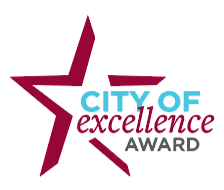Rosemount Police Wellness Program Changing Behaviors, Sending Message of Support
By Andrew Tellijohn

Police Sergeant Jim O’Leary grew up in Rosemount, serving on his hometown police force for 29 years before retiring in 2009. His colleague Sergeant Bryan Burkhalter served 28 years with the department before retiring in 2015.
Each would tragically pass away from heart attacks before they had been retired for five years.
It’s widely known that police work can be stressful and dangerous. And research shows the impact of that stress can last long past the end of an incident and through the entirety of a law enforcement career.
So, the City of Rosemount and the Rosemount Police Department took action — motivated by the loss of two respected former colleagues in less than 10 years — creating a wellness program aimed at helping officers take better care of their physical and mental health so they can live longer, healthier lives.
“I think we’ve realized that in order to take care of the people who take care of people, your public safety-first responders, you need to make sure that they are taking care of themselves first,” Police Chief Mikael Dahlstrom said. “That’s my job as a leader and as an overall city administration — to provide resources to deal with the reality of this job.”
Rosemount received a League of Minnesota Cities 2023 City of Excellence Award for its groundbreaking police wellness program.
The details
Dahlstrom is among the biggest champions of Rosemount’s Police Officer Wellness by Enhancing Resiliency (POWER) program. It focuses on both physical and mental health and has many components that include:
- A Sigma heart health evaluation for each officer every three years.
- Six free, confidential therapy sessions with a trauma-informed and licensed clinical therapist.
- A Family Academy program for new hires. Along with close family members, officers go through a program with licensed therapists and trained staff to learn about expectations and dealing with trauma.
- A nutritionist plan incorporating dietary guidance aimed at reducing cortisol, a steroid hormone produced by the body during stressful situations.
- A peer support program, where staff members are trained to help colleagues deal with stressful situations.
- Critical incident stress debriefs conducted by an outside organization’s licensed therapists during and after an occurrence.
- A wellness phone app called Lighthouse.
- A care fund, into which all staff voluntarily donate to support internal staff and their families or others in the law enforcement profession.
- Participation in all of these programs remains confidential, Dahlstrom adds.
“Generationally, police officers have been afraid to show weakness, or what they perceived as weakness,” he said. “They were afraid of losing their job, of someone taking their gun away. I have no idea who goes to these therapy sessions. All I do is I get a bill in the mail that has a random identifying number and I pay the bill.”
The program’s early days

In 2021, former Community Resource Officer Cassie Witt was part of the team assembled citywide to begin looking into police officer health issues and what could be done to reverse course.
She quickly discovered that cardiovascular disease is the number one killer of police officers and that officers have a life expectancy 15 or 20 years shorter than those working in other careers.
Some of that, she said, is due to poor diets and coping habits along with the often-sedentary nature of the job. Those issues are exacerbated by the long-term lingering effects of dealing with the physiological responses that build up whenever someone goes through an adrenaline-fueled experience. Lack of sleep brought on by stress adds another layer.
“Police officers and first responders are experiencing that sometimes multiple times throughout their shifts,” she said. “Heart health was definitely something we really wanted as part of a program.”
She found a few different companies offering heart-related programs, including Sigma Tactical Wellness. The Sigma program stuck out because it offered services for officers on site rather than requiring a bunch of different clinic stops.
“Officers don’t have a lot of time to do those types of things,” she said. “Between shift work and working a really different schedule, that’s something that is just so convenient, to have them come straight to you.”
The program also included a metabolic component and provided diet and exercise recommendations. Since adding the program, Sigma has added a consultation and six-month access with a dietitian.
“The fact they were not just screening for heart disease or identifying those early stages of heart disease, but also providing a metabolic component to it and providing tools to live a healthier lifestyle, that was just taking it a step further,” Witt said.
Significant changes
Participation was voluntary and it was significant, Witt said.
“They really wanted this information,” she said.
And the results were initially alarming, as well, with:
- 32% of those officers who were screened having inflammation issues.
- 43% having preclinical metabolic issues.
- 17% exhibiting concerning calcium scores at a young age.
- 13% showing markers indicating a 40% chance of a coronary issue in the next four years.
- 40% with evidence of uncontrolled hypertension.
Officer Paul Larson, a school resource and patrol officer who joined the Rosemount Police Department in 2021, said the program is making a difference. He said anecdotally, it’s clear that the wellness program has significantly changed police officer behaviors.
When someone dropped off a box of doughnuts at headquarters, they used to be gone in a day. Now, the box might not be empty when it’s tossed.
“The mentality was, if I walked by those doughnuts and thought, ‘I want a doughnut, I have to get one because if I come back in four hours, there might not be doughnuts left,’” he said.
Instead, fruit boxes are in higher demand.
“I walk in and there are bananas and oranges and apples, those are gone in a day,” Larson said.
That’s one anecdote indicating that officers are utilizing the wellness program and, as a result, being more proactive about their health. Another positive sign, he said, is you will hear officers openly discussing their mental health with each other, checking in after difficult incidents — not just right away, but several days and weeks later — to ensure their colleagues are doing alright.
It’s clear, Larson said, that the younger generation of officers replacing recent retirees are much more proactive about protecting their health and looking out for each other. When Rosemount assisted the Burnsville Police Department in February following the shooting of three first responders, officers checked on each other regularly.
“We’re openly talking among other officers about how I’m going to go see the therapist later this week,” he said. “One’s mental health is increasing in priority.”
What’s next?
Larson has worked on four different forces since becoming a police officer in 2011. He said this program is unlike any he’s seen before, and it’s only getting better.
While the program was in its early stages, Dahlstrom found a community partner, Hope Fieldhouse, to help provide fitness memberships for staff.
That was a great partnership, he said, but adds the city will soon open a new police headquarters building that will include fitness facilities, space for napping, and other on-site amenities, which are easier to use while on or just getting off the job than going to other facilities in the community.
“When you’re carrying a duty belt and a gun and you’re on duty like that, you can’t go to a public space,” he said. “And you also need to be ready to respond to a call in case of an emergency. I can’t go to Life Time Fitness and have my gun belt in the locker.”
In the meantime, the department has been able to use the wellness program as a recruiting tool.
“From a recruitment standpoint, we promote the presence of these programs heavily as we talk with potential applicants and they are universally well received,” said Logan Martin, city administrator. “The program sets us apart in a highly competitive world of police officer recruitment.”
The impacts of the program are noticeable, and officers are already benefitting from it. Leaders from Rosemount hope other agencies find value in taking a similar approach.
“The overall view or approach to officer wellness,” Dahlstrom said, “has shifted 180 degrees in the right direction.”
Andrew Tellijohn is a freelance writer.


